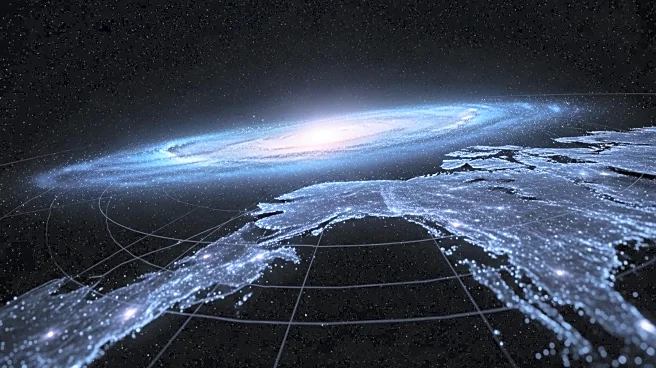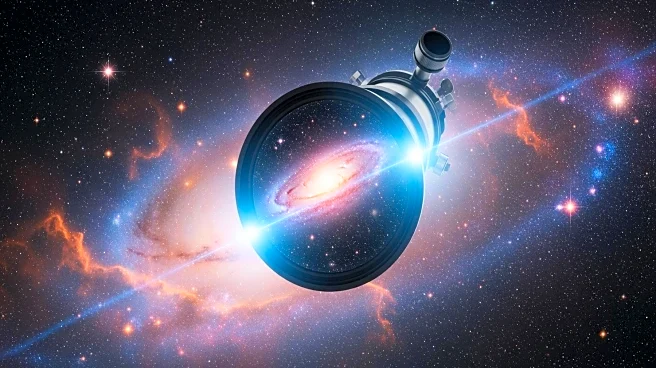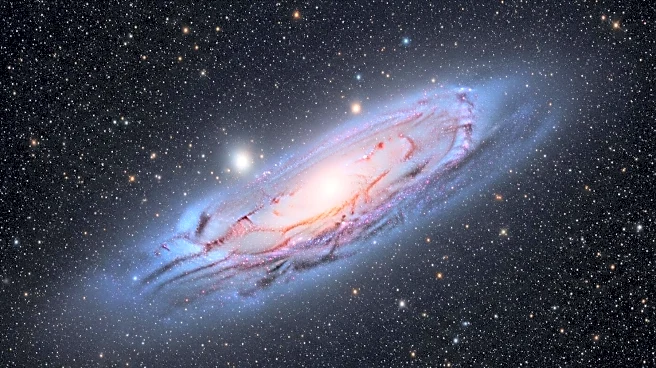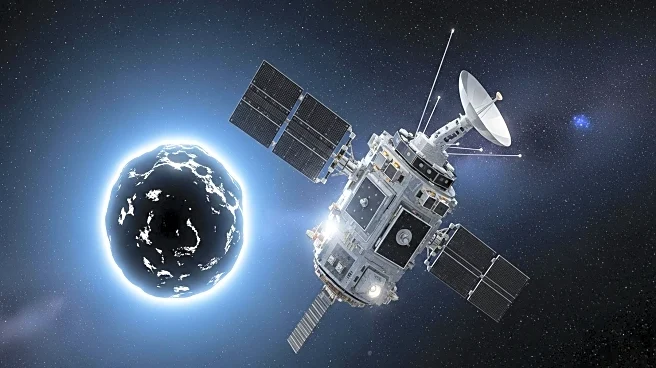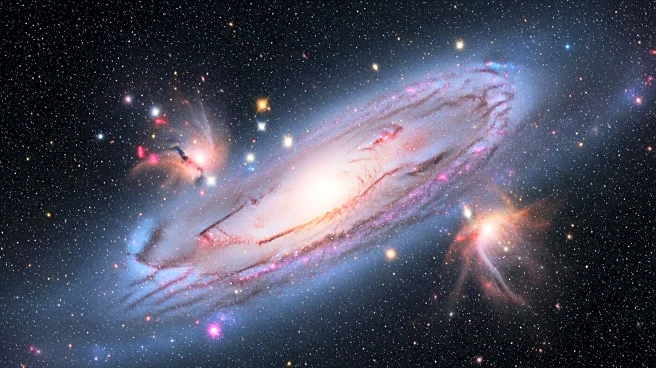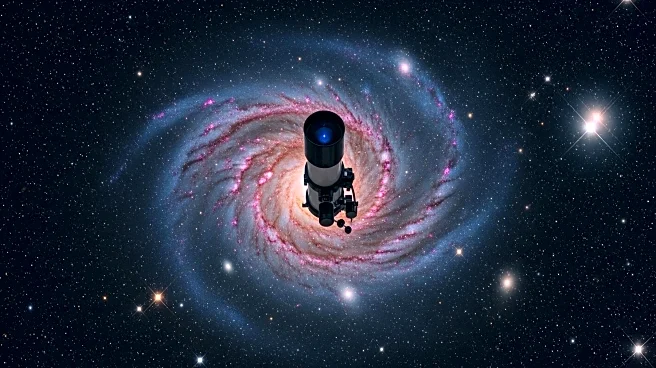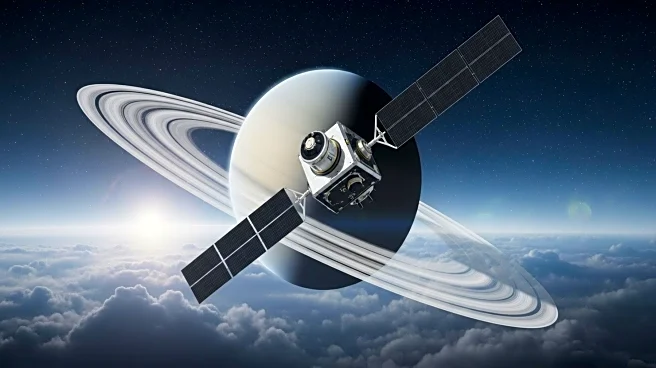What's Happening?
The European Space Agency (ESA) has released a groundbreaking 3D map of the Milky Way, created using data from the Gaia space telescope. Launched in 2013, Gaia aimed to map approximately one billion stars in the Milky Way in three dimensions. After 12 years of observations, Gaia's mission concluded in January 2025, having recorded over three trillion observations of about two billion celestial objects. The new map allows viewers to 'fly' through star-forming regions up to 4,000 light-years away, offering the most accurate representation of our local galactic neighborhood to date. The map includes precise positions of 44 million stars and highlights 87 rare O-type stars, which are massive and emit intense ultraviolet light, revealing areas where new stars are being born.
Why It's Important?
This 3D map provides a realistic glimpse of the Milky Way from an external perspective, aiding scientists in studying how massive stars shape their environments. The data reveals bubbles and cavities in the galaxy's gas and dust caused by stellar radiation, enhancing our understanding of the Milky Way's structure. The map's accuracy builds confidence in its representation of the galaxy, offering insights into star formation and the dynamics of stellar nurseries. It serves as a valuable tool for astronomers to test models of the galaxy's spiral arms and understand the life cycle of matter within the Milky Way.
What's Next?
Future data releases from Gaia, expected in 2026 and 2030, will provide even more precise measurements, expanding the 3D map further into the galaxy. These releases will enable deeper insights into the Milky Way's composition, star orbits, and history. The ongoing analysis of Gaia's data will continue to refine our understanding of the galaxy's structure and dynamics, paving the way for future astronomical discoveries.
Beyond the Headlines
The Gaia mission has democratized access to detailed galactic data, allowing both scientists and the public to explore the Milky Way through interactive tools and visualizations. This initiative fosters educational opportunities and citizen science, encouraging amateur astronomers to contribute to the study of the galaxy. The mission's success highlights the synergy between mapping our galaxy and the broader universe, providing a comprehensive view of our cosmic neighborhood.


